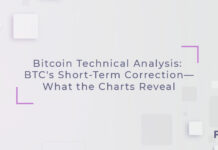Bitcoin halving occurs every four years. With BTC’s supply rate decreasing 50% after each one, the system will continue until roughly 2140, when the last Bitcoin is mined.
Bitcoin has crossed the halfway line of its third halving, which the community sees as a bullish sign for its price since the issuing rate is reduced by 50%.
Less Than 105,000 Blocks Away From Next Halving
After Block 735,000 was mined on Thursday by Poolin, earning 0.16215354 BTC ($6,402.45) in fees, Bitcoin officially entered the second half of the third halving cycle. This one – like any other in the past or the future – has 210,000 blocks available to be mined, and half of them, 105,000 blocks, have been mined since May 11th, 2020.
After the next halving, currently scheduled to take place in Q2 2024, Bitcoin’s supply rate will decrease by 50%, likely causing another “supply shock.” Currently, roughly 90% of the 21 million BTC has been mined, and less than 7% of the total supply will be available as the network kicks off its fourth halving cycle in two years.
Another notable factor is the mining hash rate hitting ATH at 249.1 exahashes per second (EH/s) on Wednesday, slightly before the second leg of the cycle was up. Since then, the metric trended downward as the crypto selloff deepened. Higher hash rates indicate stronger computational power needed from miners. As such, the network itself has become more secure.
Price Impact
According to Bitcoin’s system, the next halving – designed to trim the number of each block’s rewards by half – will occur in two years. Bitcoin miners who receive BTC for validating on-chain transactions will thereby only gain 3.125 BTC for each block they mine.
By studying Bitcoin’s history, analysts commonly agree that violent upward price action would usually arrive after each halving. In the wake of the latest in May 2020, the primary cryptocurrency soon entered a months-long bull market, breaking the ATH set back in 2017 and later reaching the $60,000 price level on multiple occasions last year.
The halving is often interpreted as a bullish price signal because a so-called “supply shock” could push the asset much higher than before due to reduced issuance of new coins.
Source: CryptoPotato




